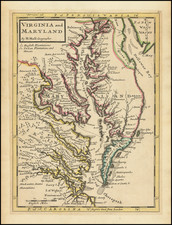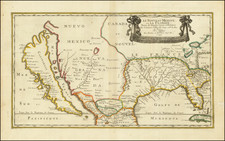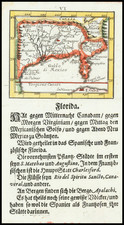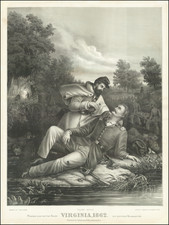Virginia Indians: Virginia Indians seated around a fire
In this vivid representation, Native Americans partake in a ceremonious gathering around a roaring fire, an Algonquian ritual conducted on the shores of Roanoke Island, North Carolina. The illustration captures the customs of the Powhatan Indians, whose daily life and spiritual practices were closely intertwined with nature.
The detailed portrayal reveals men and women, both seated and kneeling, congregated around the fire. Many are adorned with animal skins and ornate necklaces, while some clutch gourd rattles, invoking the rhythm of their chants. Beyond this central gathering, figures engaging in fishing activities from their canoes.
Historical records, particularly observations by John Smith, highlight the significance of such rituals, most notably the duty of the kwiocosuk. Ritual offerings, primarily made to appease the deity Okee, were an intrinsic part of their religious practices. While high-ranking society members often presented food to the flames as an expression of gratitude, it was also customary to make sacrifices, such as deer's blood or suet, on prominent stone altars known as pawcorance. Such gestures were viewed as necessary precursors to momentous activities, whether embarking on a hunt or returning victorious from a raid. The looming presence of violent summer thunderstorms would compel shamans to venture onto rivers in canoes, offering tobacco, puccoon, or beads to the waters in an attempt to mollify Okee.
In 1585, Governor John White, was part of a voyage from England to the Outer Banks of North Carolina under a plan of Sir Walter Raleigh to settle "Virginia." White was at Roanoke Island for about thirteen months before returning to England for more supplies. During this period he made a series of over seventy watercolor drawings of indigenous people, plants, and animals. The purpose of his drawings was to give those back home an accurate idea of the inhabitants and environment in the New World.
The earliest images derived from White's original drawings were made in 1590, when Theodor De Bry made engravings from White's drawings to be printed in Thomas Hariot's account of the journey. Hariot, a mathematician, had also been part of the 1585 voyage.
Theodor de Bry (1528-1598) was a prominent Flemish engraver and publisher best known for his engravings of the New World. Born in Liege, de Bry hailed from the portion of Flanders then controlled by Spain. The de Brys were a family of jewelers and engravers, and young Theodor was trained in those artisanal trades.
As a Lutheran, however, his life and livelihood were threatened when the Spanish Inquisition cracked down on non-Catholics. De Bry was banished and his goods seized in 1570. He fled to Strasbourg, where he studied under the Huguenot engraver Etienne Delaune. He also traveled to Antwerp, London, and Frankfurt, where he settled with his family.
In 1590, de Bry began to publish his Les Grands Voyages, which would eventually stretch to thirty volumes released by de Bry and his two sons. The volumes contained not only important engraved images of the New World, the first many had seen of the geographic novelties, but also several important maps. He also published a collection focused on India Orientalis. Les Grands Voyages was published in German, Latin, French, and English, extending de Bry’s fame and his view of the New World.










![[St. Augustine, Florida] Beschreibung des Vorgebürgs Floride/ da die Franzosen anzufahren pflegen/welches von ihnen das Französische Vorgebürg genannt wirdt.](https://storage.googleapis.com/raremaps/img/small/84381.jpg)


![[Battle of Yorktown] Plan D'York en Virginie avec les attaques et les Campemens de l'Armee combinee de France et d'Amerique](https://storage.googleapis.com/raremaps/img/small/102603.jpg)
